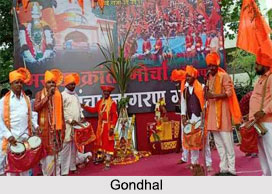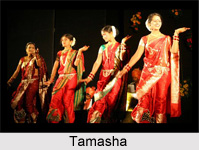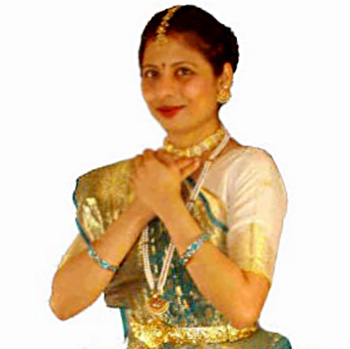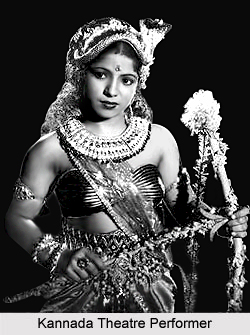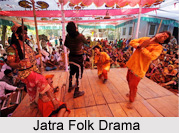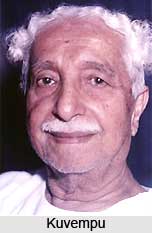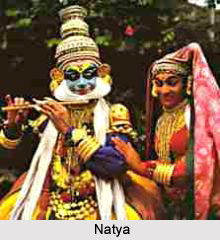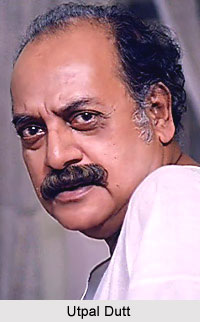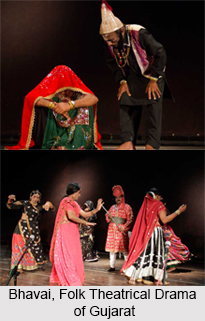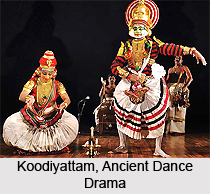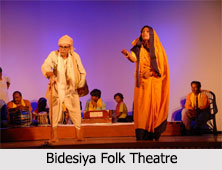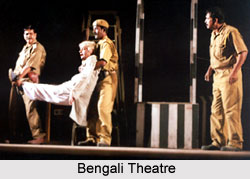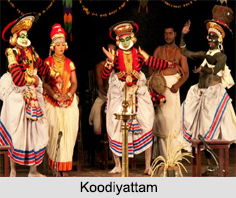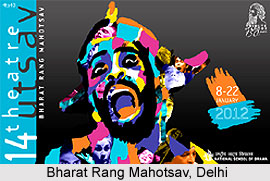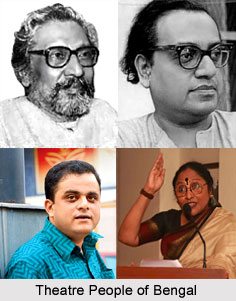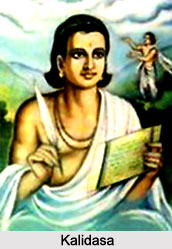 Origin of Indian drama in its earliest form can be traced right back to the 4th century BC. This early date is confirmed to an extent by Bharata`s Natyashastra. It is feared that the dramatic literature prior to Kalidasa have been destroyed. A record of Indian ancient literature gives one the impression that drama began with the works of Kalidasa and Bhavabhuti. But their works are so matured in all aspects that it is doubtful as to whether they were the earliest examples of Indian drama. Though no direct proof of the existence of dramatic art prior to Kalidasa is found, circumstantial evidences can be pieced together to get a picture of pre-Kalidasa dramatic art. The Vedic Samhitas, Brahmanas, the great epics of Mahabharata and Ramayana, the grammatical works of Panini and Patanjali preserve dialogue speeches and short dramatic episodes which throw light on the evolution of performing arts in India. The Vedic hymns, for example, contain stories, prayers and songs interspersed with interesting dialogues. There is a highly lyrical dialogue between Viswamitra and the rivers. These dialogues were known as Samvadaas.
Origin of Indian drama in its earliest form can be traced right back to the 4th century BC. This early date is confirmed to an extent by Bharata`s Natyashastra. It is feared that the dramatic literature prior to Kalidasa have been destroyed. A record of Indian ancient literature gives one the impression that drama began with the works of Kalidasa and Bhavabhuti. But their works are so matured in all aspects that it is doubtful as to whether they were the earliest examples of Indian drama. Though no direct proof of the existence of dramatic art prior to Kalidasa is found, circumstantial evidences can be pieced together to get a picture of pre-Kalidasa dramatic art. The Vedic Samhitas, Brahmanas, the great epics of Mahabharata and Ramayana, the grammatical works of Panini and Patanjali preserve dialogue speeches and short dramatic episodes which throw light on the evolution of performing arts in India. The Vedic hymns, for example, contain stories, prayers and songs interspersed with interesting dialogues. There is a highly lyrical dialogue between Viswamitra and the rivers. These dialogues were known as Samvadaas.
Dramatisation of Epics
Mahabharata and Ramayana are storehouses of beautiful stories, powerful dialogues and exciting dramatic moments. Professional storytellers like Kathakas used to narrate these stories dancing, singing and dramatizing various episodes of these epics before the rural folk. There were also Pathakas and Dharakas. The Pathakas read out or sang from the text of the epics giving histrionic effects where necessary. The role of the Dharakas who accompanied the Pathakas was to explain the text using equally dramatic style. Like the Kathakas, the Pala and Daskathia singers in Orissa carry the remnants of those early simple forms of dramatic performance.
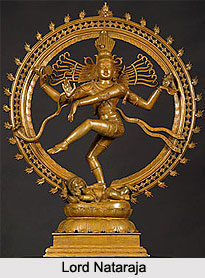 The Uttara Kanda of Ramayana describes how Lava and Kusha, the twin sons of Lord Rama went from place to place singing various episodes of Ramayana. `Uttararama Charita` of Bhavabhuti narrates an interesting anecdote, an encounter between king Janaka and his grandsons, Kusha and Lava. Through that episode, Bhavabhuti informs the audience how various episodes of Ramayana, after being composed by Valmiki, were being sent to Bharata Muni for dramatization through Apsaras. The story throws sufficient light on how gradually separation of various functions through specialization (in this case, script writing and staging) was taking place.
The Uttara Kanda of Ramayana describes how Lava and Kusha, the twin sons of Lord Rama went from place to place singing various episodes of Ramayana. `Uttararama Charita` of Bhavabhuti narrates an interesting anecdote, an encounter between king Janaka and his grandsons, Kusha and Lava. Through that episode, Bhavabhuti informs the audience how various episodes of Ramayana, after being composed by Valmiki, were being sent to Bharata Muni for dramatization through Apsaras. The story throws sufficient light on how gradually separation of various functions through specialization (in this case, script writing and staging) was taking place.
Works of Panini and Patanjali
The great grammarian Panini and the great exponent of Yoga, Patanjali, also throw interesting light on ancient dramaturgy. Though the disciplines they dealt with did not exactly require any special discussion of the performing arts, they have often provided valuable information about their contemporary dramatic performance by way of illustrating a point. For example, from Panini`s famous book on grammar, Astadhyai, it is known that actors not only recited, they also sang. The actresses used to sing and dance. Male actors, known as Bhrukumsas also played the parts of female characters. Panini also mentions two compilers of Nata sutras (treatises for actors), namely, Silalin and Krusasv. So also Patanjali in his `Mahabhasya` informs about the evolution of drama from its epic background. He also describes the actors whom he calls Saubhikas.
Vishnuite and Shaivite interpretations
The worshippers of Lord Vishnu and Lord Shiva had their own stories of the genesis of dramatic art. `Dasarupa` the famous work on ancient dramaturgy takes an analogy from the ten incarnations of Vishnu and discusses the ten genres of drama. `Bruhatkatha` of Gunadhya (3rd cent A.D) narrates the story of an actress enacting the story of Samudra Manthan (churning of nectar.) Lasabati was enacting the stealing of nectar by Vishnu disguised as a beautiful woman. King Hala, who was viewing the play fell in love with Lasabati and married her. The image of Nataraja Shiva is the presiding deity of performing arts. The Shaivaites and the Shaivaite Tantriks project this image of Shiva. Great classical dramatists like Kalidasa, Bhavabhuti and Sudraka have invoked Shiva in their plays.
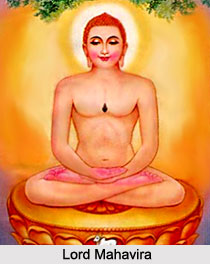
Buddhist and Jain Dramatic works
Buddhists and Jains have placed strict strictures on their followers forbidding their participation in song, dance or plays. However, while depicting their theology they speak about the importance of performing arts in the life of the great prophets. Lalita Vistara for example, declares that the Lord Buddha was proficient in `the art of the Veena, all manners of instrumental music, dance, song, recitation, Lasya, comic and dramatic action.` The Jainas seem to be still stricter in their austerity and instruct that the Bhikkhu should not go where stories are told or where acrobats are performing. Dramatic shows, songs and music should be shunned. Nevertheless, when god Suryabha comes to render homage to Lord Mahavira, he displays in his honour his knowledge of the dramatic art.
Thus discussed is a brief glimpse into the origin of Indian drama.
